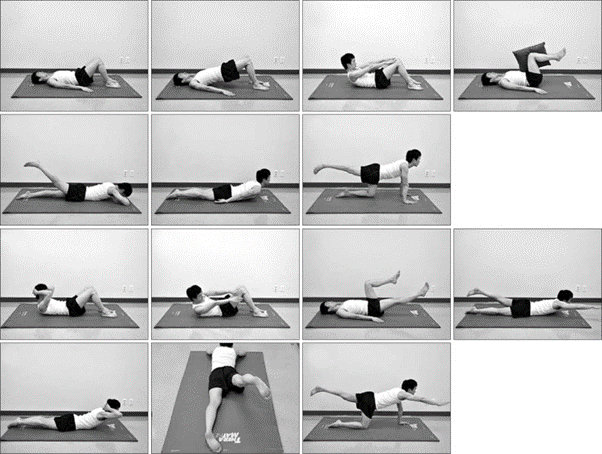Low back pain is commonly attributed to a ‘weak core’ or a lack of ‘core stability’, and this leads to lots of advice about ‘activating your core’ as a way to mitigate or prevent back pain. Although these terms are used with a high degree of certainty and confidence, is it possible to accurately define what ‘core’ actually means, or to measure its importance for injury risk or performance? The current research suggests that the answer to those questions is no.
It may come as a surprise to learn that there is no clear definition for the term ‘core stability’. In the research world, the definition varies widely depending on the author and what specific muscle groups are being studied. Generally speaking, the ‘core stability’ muscles include all muscles between the shoulders and pelvis. These muscles can be further divided into ‘global’ and ‘local’ core stability muscles:
The global muscle system refers to the rectus abdominis, the obliquus externus, and the thoracic part of the lumbar iliocostalis (among others) because they affect vertebral orientation and trunk stabilization without being directly attached to the spine.
The local muscle system refers to the smaller muscles that are directly attached to the spine such as the multifidus muscles, the transversus abdominis, and the obliquus internus abdominis.
With this delineation, clinicians and trainers often try to ‘selectively activate’ the local muscle system without activating the global muscle system. This often involves using body weight exercises without external loading. The commonly used rationale for this approach is to prevent “overactivation” of the global muscle system, which could lead to restricted and compensatory movement patterns. Although that narrative may sound appealing, there is absolutely no scientific evidence to support those types of claims (Wirth 2017).
On the contrary, there are some randomized controlled trials that support the use of ‘lumbar stabilization exercises’ over ‘traditional strengthening exercises’ for improving pain and function in patients with nonspecific low back pain (Inani et al. 2013, Moon et al. 2013). Without getting too bogged down with a methods discussion, one of the biggest issues with these papers is what the authors deem to be ‘traditional strengthening exercises’. Such exercises typically involve lower-level movements such as the ones demonstrated below:

There is nothing inherently wrong with these types of movements or ‘lumbar stabilization’ exercises in general. They can be an excellent way to introduce movement and exercise to a patient, help with short-term symptom reduction, and build confidence in those who are fearful of movement. Rather, it’s the language and rationale used to ‘sell’ these exercises to patients or clients that can often be unhelpful — or outright harmful. Here is an example, quoting from a qualitative study that interviewed patients about their experiences with back pain and rehabilitation:
“Basically all I’ve kind of been told to do by physios is to work on my core…I’ve been tested by various different physios, and Pilates, and I’m apparently ridiculously weak…. I had an abortion because I didn’t think I could have a baby. I didn’t think I could handle it…carrying it, and having extra weight on my stomach.” (Darlow 2013)
This is certainly an extreme example; however, telling people they have a ‘weak core’ or their ‘spine is weak’ can cause people to become less physically active and more fearful of movement (Bunzli 2017). For the athletic population, these narratives can cause athletes to waste time doing 15 different ‘core stabilization’ exercises when there is no evidence to suggest they help to mitigate risk of injury or improve performance (Wirth 2017).
Patients presenting with low back pain symptoms tend to improve over time regardless of what type of treatment intervention is used (Owen 2020). With that said, education and exercise can reduce future occurrence of low back pain by 45% (Steffens 2016). The key is to find the appropriate exercise dosage for the individual based on their desired goals and what they want to get back to doing. The trunk musculature can still be trained as part of a comprehensive resistance training program.




